Sample information |
|
| Picture |
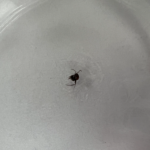
|
|---|---|
| Location | |
| Collection date | 09/12/2023 |
| Captive / Cultivated? | Wild-caught |
| Group | Palm Beach Atlantic University |
| Observations | One ant arthropod was collected under the tree around 5 p.m. and about 85 F outside. |
| Putative identification | Arthropoda Insecta Hymenoptera Formicidae |
Methods |
|
| Extraction kit | DNeasy (Qiagen) |
| DNA extraction location | Whole arthropod |
| Single or Duplex PCR | Single Reaction |
| Gel electrophoresis system | MiniPCR |
| Buffer | TAE |
| DNA stain | GelGreen |
| Gel images |
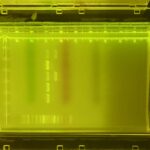
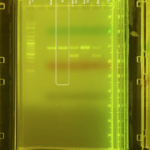
|
| Protocol notes | DNA extraction: Made sure to crush all samples really well and used the entire body of the arthropods. Used a 2% agarose gel
Gel electrophoresis lanes: 1 – 10ul of 1 Kb Plus DNA 2- (no sample) 3 – 20 ul of Unknown Arthropod #1 (Mosquito) 4 – 20 ul of Unknown Arthropod #2 (Ant) 5 – 20 ul of Positive Drosophila Control 6 – 20 ul of Negative Drosophila Control 7 – 20 ul of Positive DNA Control 8 – 20 ul of Water Analysis: Extraction was done properly because there are bands percent for the two arthropods and three of the controls. Lane 8 has no bands because it is a water sample. |
Results |
|
| Wolbachia presence | No |
| Confidence level | High |
| Explanation of confidence level | There were no problems during the laboratory procedure, and all steps were followed due to the protocol. All of the controls showed the expected results. The size of the Ant sample band on the gel is around 728 bp concluding that it amplified for the Arthropods CO1 gene. Was not able to detect the Wolbachia in the Ant sample. |
| Wolbachia 16S sequence | |
| Arthropod COI sequence |
|
| Summary | The Formicidae was found to be negative for Wolbachia. |
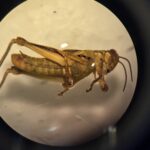 Differential Grasshopper – Melanoplus differentialis
Differential Grasshopper – Melanoplus differentialis Pill Bug (Armadillidium vulgare) – Draft
Pill Bug (Armadillidium vulgare) – Draft Melanoplus Femurrubrum
Melanoplus Femurrubrum Grasshopper – Orthoptera
Grasshopper – Orthoptera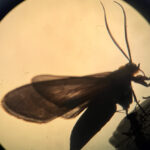 Cisseps Fulvicollis
Cisseps Fulvicollis